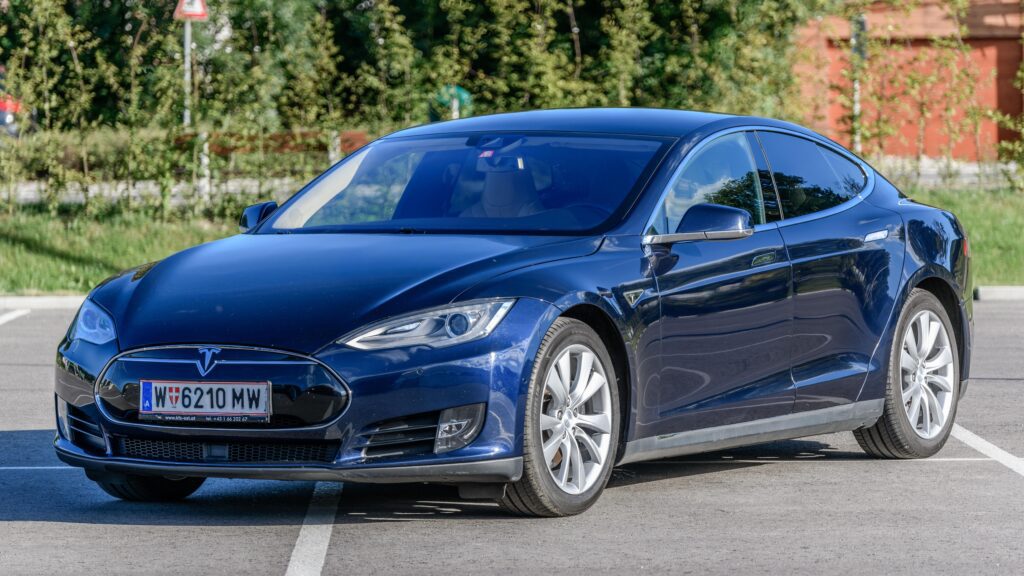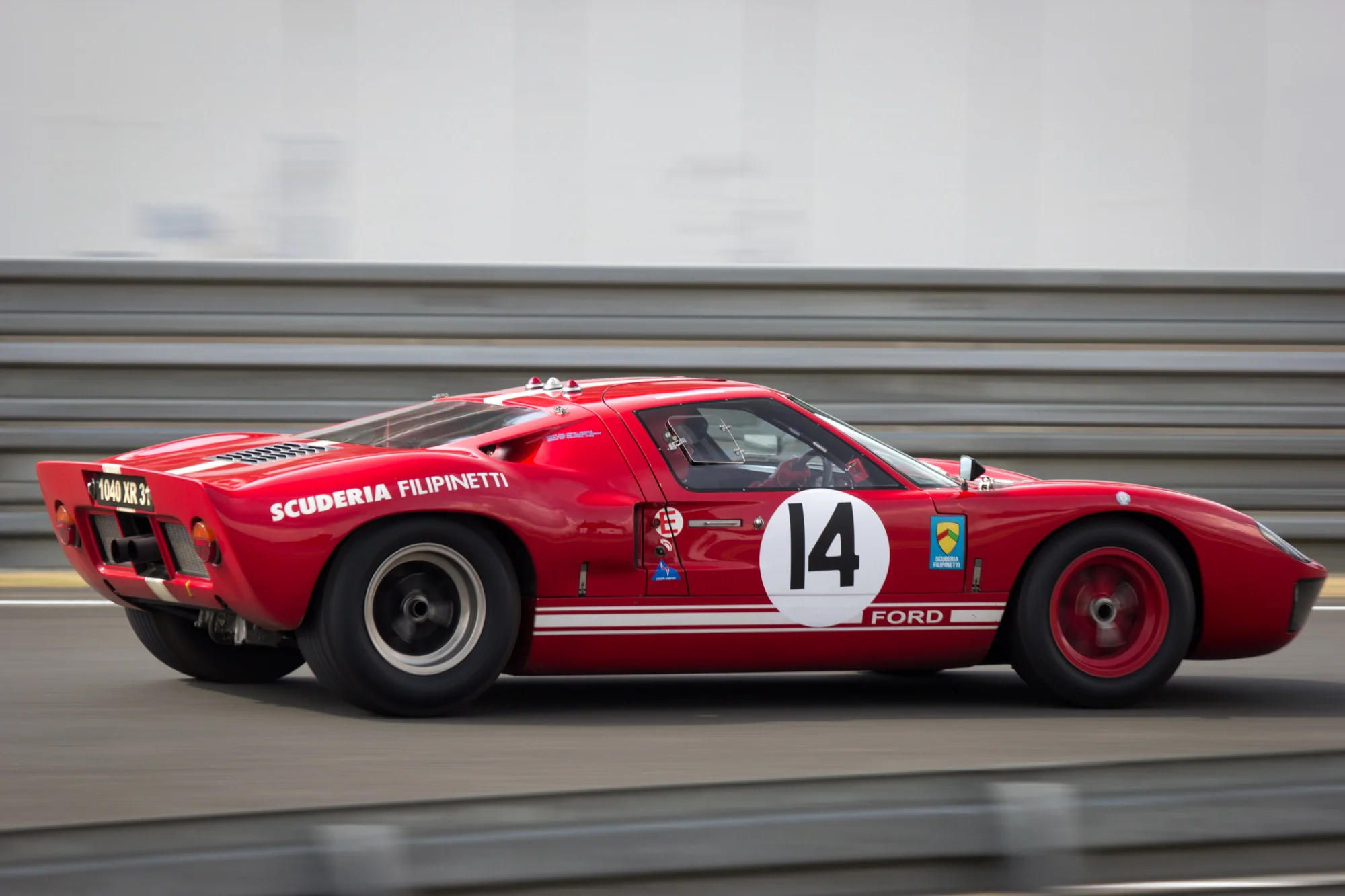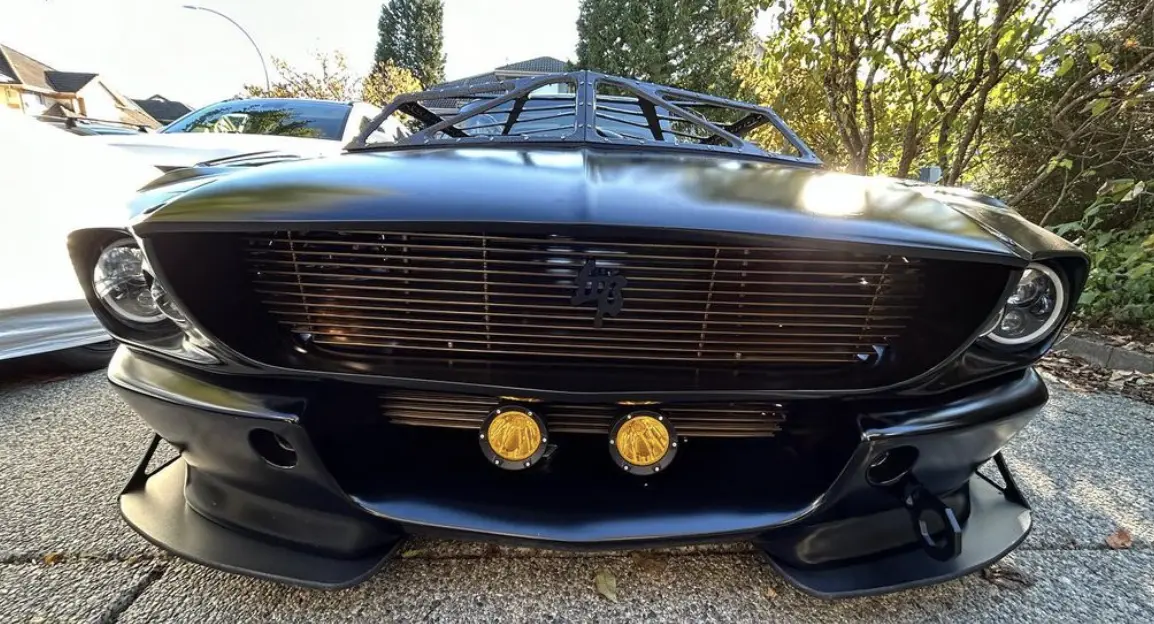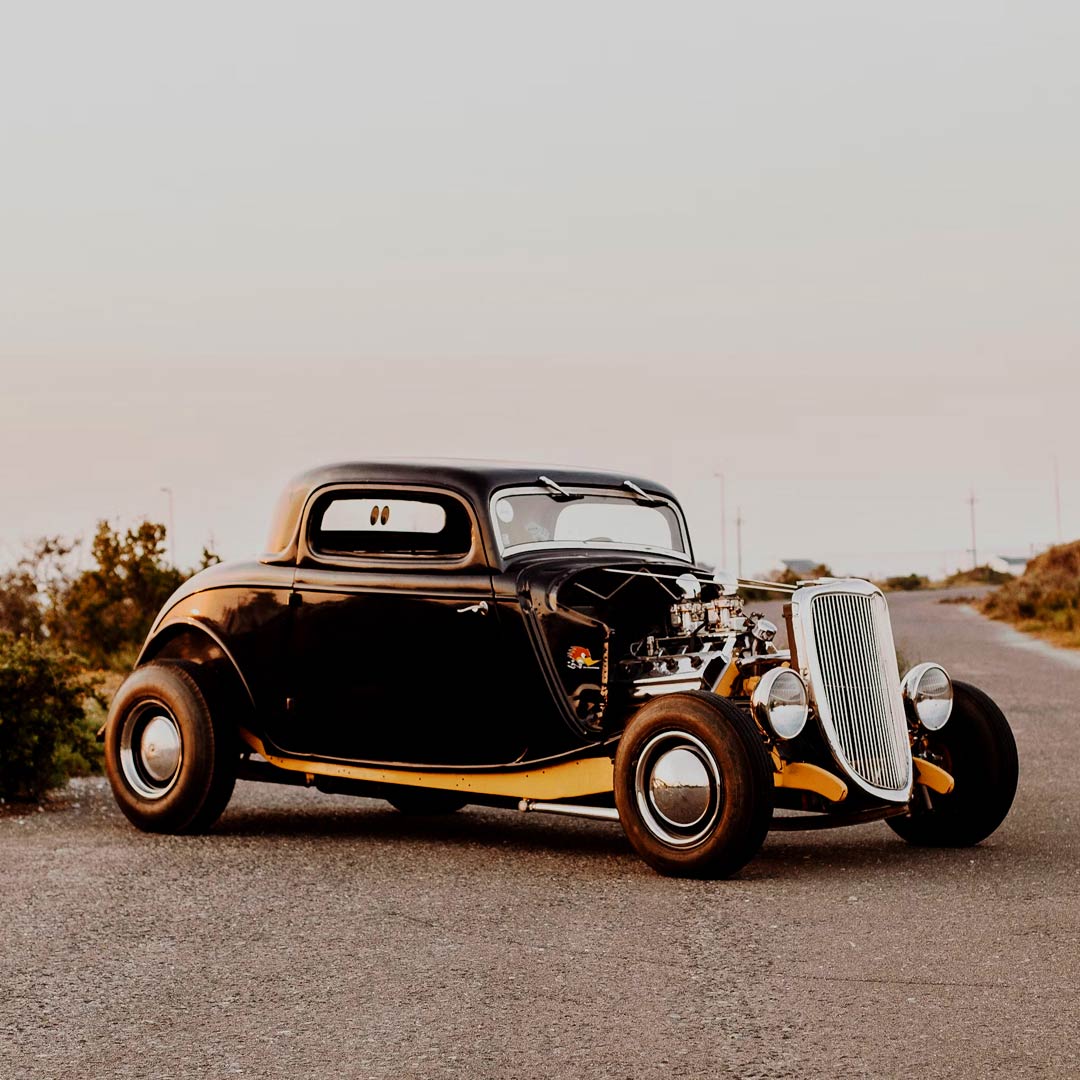About JC Whitney Editorial Team

Meet the JC Whitney Editorial Team, your go-to experts for automotive insights, from in-depth car culture articles to the latest in vehicle tech.
More from JC Whitney Editorial TeamAlthough the car—as concept, prototype, and consumer product—can trace its invention to Europe, there’s no question that America has made an indelible mark on the automotive world. From the first assembly lines to the first widely available consumer cars, the US is responsible for jumpstarting some of the earliest innovations in automotive technology. From those formative days to the present, creating legendary automobiles has been an aspect of the US auto industry all along. We’ve seen iconic muscle cars, practical family vehicles, and all-terrain machines that will drive over whatever you point them at come off US assembly lines and into the annals of automotive history. In its own way almost every model of car created in the USA has made its stamp on the wider world of automobiles; the list that follows is by no means exhaustive, but here is a selection of American icons that helped shape the industry as it developed.
1908 • Ford Model T
The Ford Model T, colloquially known as the “Tin Lizzie,” revolutionized the auto industry in ways that reverberated across the entire world. Introduced in 1908, its pioneering use of assembly line production drastically reduced manufacturing costs, allowing automobiles to transition from luxury items reserved for the elite to accessible commodities for the masses. This democratization of personal transportation fundamentally transformed societies, fostering greater mobility and reshaping urban and rural landscapes. Additionally, the Model T’s manufacturing methods set a new industrial paradigm, influencing not only the auto sector but also other industries, driving them toward mass production techniques. By making cars affordable and production efficient, the Model T laid the groundwork for the modern automotive industry and established the automobile as an indispensable facet of 20th-century life.
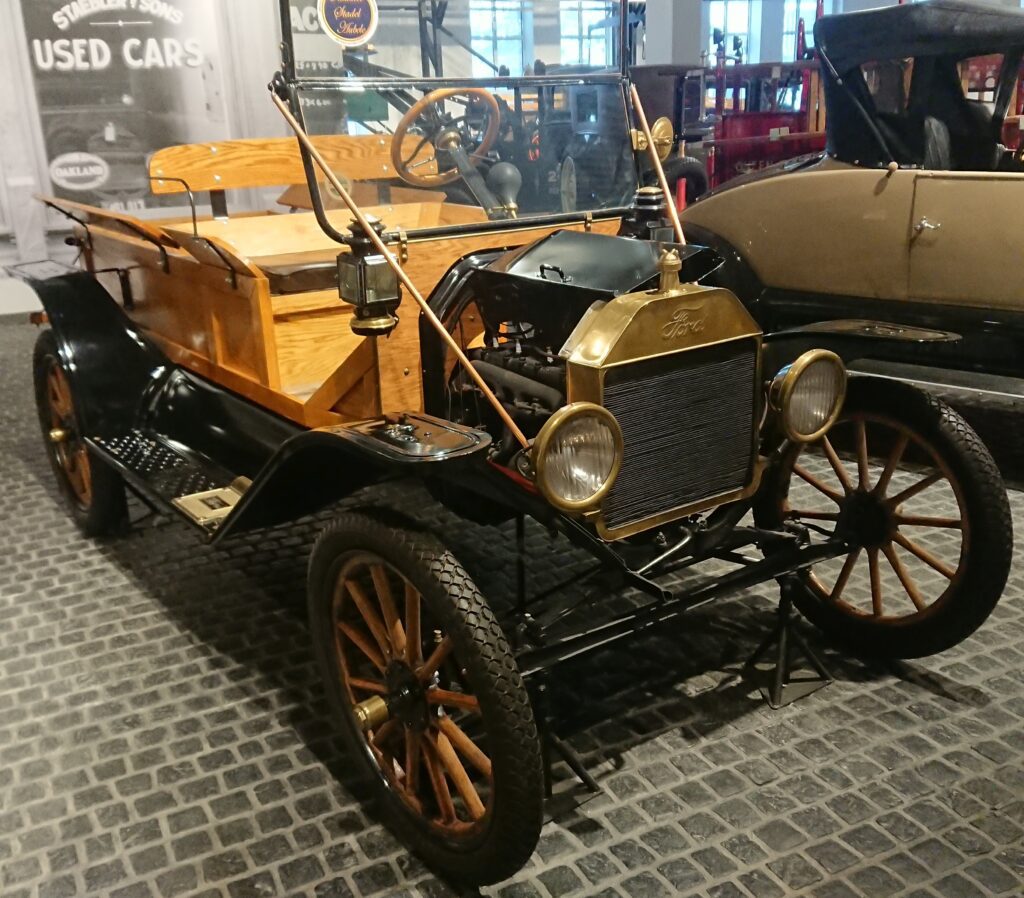
1941 • Jeep MB
The Jeep MB, widely recognized for its service during World War II, stands as an emblem of rugged utility and versatility. Initially designed for military reconnaissance and combat scenarios, its adaptability quickly made it indispensable on the battlefield. After the war, the Jeep’s robustness and simplicity caught the civilian market’s attention, effectively giving birth to the sport utility vehicle (SUV) and four-wheel-drive segment. This transition from military to civilian use set a precedent that showcased the viability and popularity of such vehicles for daily use. In essence, the Jeep MB sowed the seeds for the SUV and off-road vehicle market, influencing subsequent designs and concepts for decades. Its legacy can be seen in the vast array of SUVs and 4×4 vehicles today, cementing its position as a cornerstone in the evolution of the automotive industry.
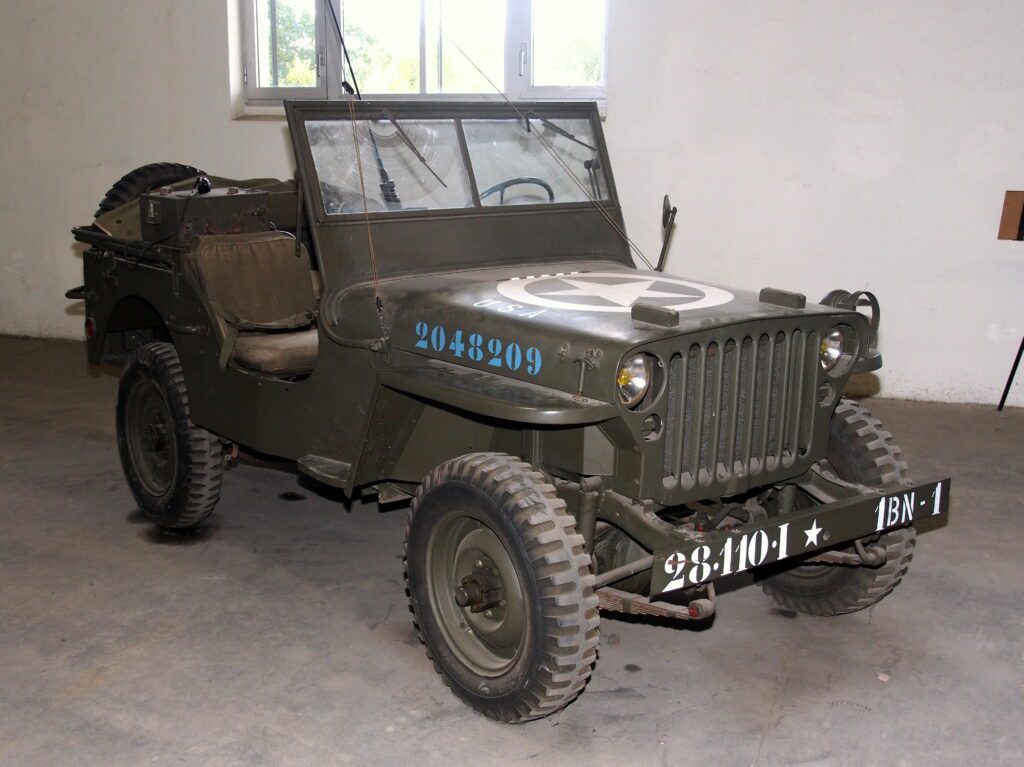
1948 • Ford F Series
Since its inception in 1948, Ford’s F-series trucks have become synonymous with American pickup culture, setting the gold standard for durability, utility, and design. These trucks have adeptly straddled the line between workhorse and daily driver, catering to professionals needing reliable work vehicles and families desiring roomy, versatile transportation. As the best-selling vehicle in the U.S. for several decades, the F-series’ commercial success has been unparalleled, prompting competitors to elevate their game to match Ford’s blend of innovation, performance, and design. Its influence has also driven technological and luxury advancements in the truck segment, transitioning pickups from basic utilitarian machines to high-tech, comfortable, and even luxurious rides. The F-series’ enduring appeal and its adaptations to market demands have not only solidified its iconic status but have also played a pivotal role in defining the trajectory and priorities of the pickup truck segment in the global auto industry.

1949 • Oldsmobile Rocket 88
The Oldsmobile Rocket 88, introduced in 1949, is often hailed as one of the progenitors of the American muscle car movement. Blending a relatively lightweight body with a powerful V8 engine – the “Rocket” – the Rocket 88 offered an exhilarating performance that was previously reserved for pricier, luxury vehicles. This potent combination not only made it a dominant force in early NASCAR racing but also resonated deeply with a post-war America that was hungry for speed and innovation. The car’s success prompted other manufacturers to experiment with placing larger engines in their standard sedans, giving birth to the muscle car era of the 1960s. Beyond its direct lineage to performance cars, the Rocket 88 symbolized a shift in consumer expectations, emphasizing performance alongside comfort and style, thus leaving an indelible mark on automobile design philosophies for generations to come.

1953 • Chevrolet Corvette
The Chevrolet Corvette, since its debut in 1953, has held an iconic status as America’s premier sports car. Its sleek design, performance-driven engineering, and affordability set it apart in a market that was predominantly dominated by European sports cars. The Corvette showcased America’s capability to produce vehicles that weren’t just utilitarian or luxury-oriented but also performance-centric and aesthetically captivating. Its continuing evolution, through numerous generations, kept pushing boundaries, often adopting innovations like fiberglass bodies, fuel injection, and advanced suspension systems. This consistent commitment to progress influenced other manufacturers to elevate their design and performance standards. Moreover, the Corvette’s success demonstrated a sustained market demand for high-performance sports cars, influencing both domestic and international automakers to invest and innovate in this segment. Over the decades, the Corvette’s legacy has been one of aspiration, performance, and American automotive pride.
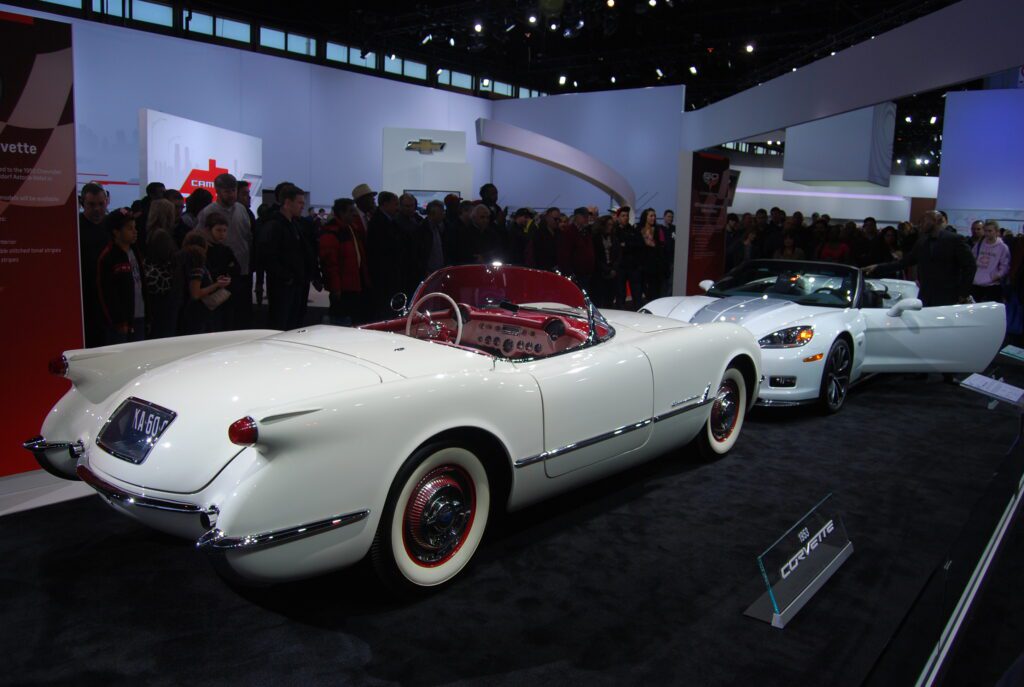
1958 • Ford Thunderbird
The 1958 Ford Thunderbird, colloquially known as the “Square Bird” due to its boxy design, marked a significant departure from its predecessors by transitioning from a two-seater sports car to a larger, four-seat “personal luxury car.” This shift in design philosophy reflected an astute reading of market demands, identifying a burgeoning niche for vehicles that melded sporty aesthetics with upscale comfort. The Square Bird’s success — it outsold the previous model three to one — was a testament to this market foresight. The 1958 Thunderbird’s influence resonated deeply within the automotive industry, prompting the rise of the personal luxury car segment in subsequent decades, with competitors launching their own renditions. Models like the Buick Riviera and the Chevrolet Monte Carlo can trace their roots back to the precedent set by the Thunderbird. Through its innovative approach, the 1958 Ford Thunderbird reshaped consumer expectations and set the stage for a new class of American automobiles, blending performance, luxury, and style.

1964 • Ford Mustang
Introduced in 1964, the Ford Mustang swiftly galvanized the American automotive landscape, ushering in the era of the “pony car.” A blend of affordability, sporty design, and versatile performance options, the Mustang appealed to a broad swath of consumers, from young adults to enthusiasts looking for a performance edge. Its unprecedented success spawned competitors, like the Chevrolet Camaro and Dodge Challenger, and gave birth to a new, uniquely American category of performance vehicles. Beyond its market impact, the Mustang became a cultural icon, resonating in movies, music, and media, reinforcing the idea of the automobile as a symbol of freedom and individual expression. Its continuing evolution, through various iterations and performance packages, has kept it at the forefront of automotive innovation and design. The Mustang’s enduring influence is evident in its capacity to inspire a whole segment and shape the perception of American performance cars on the global stage.

1966 • Ford Bronco
Introduced in 1966, the Ford Bronco carved a unique niche in the automotive landscape, setting the tone for the future of compact SUVs. Distinct from the larger, more cumbersome SUVs and trucks of its time, the Bronco blended rugged capability with a more manageable size, making it both a city commuter and an off-road adventurer. Its versatility struck a chord with a broad spectrum of consumers, from outdoor enthusiasts to everyday drivers. As the Bronco’s popularity soared, it prompted other manufacturers to explore and invest in the compact SUV segment, even helping to pave the way for the ubiquitous crossover vehicles seen on the road today. Moreover, its distinct design and character fostered a loyal following and cult status, influencing subsequent generations of SUV design and branding. Even after its hiatus and eventual relaunch in 2020, the Bronco’s legacy remained powerful, exemplifying the vehicle’s enduring influence in shaping perceptions, design philosophies, and market trends in the world of SUVs.
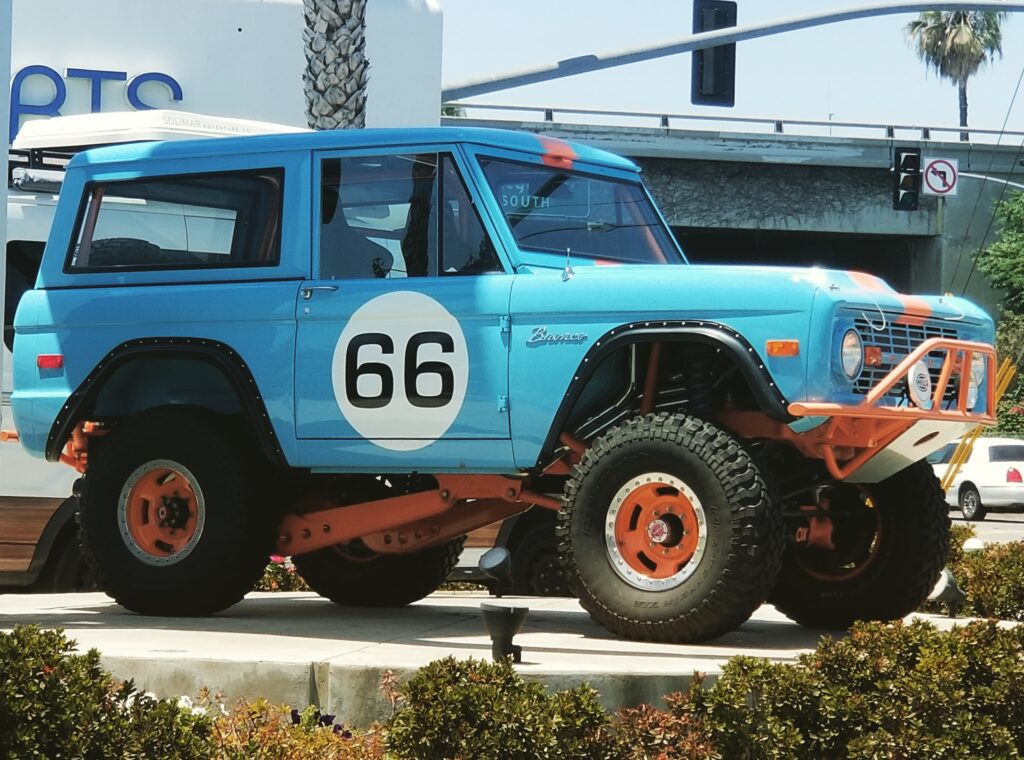
1966 • Ford GT40
The Ford GT, initially conceived in the 1960s as a direct challenge to European endurance racing dominators, notably Ferrari, emerged not just as a performance marvel but as a testament to American engineering prowess. With its victories at prestigious races like Le Mans, the GT40, as it was known then, showcased that American automakers could not only compete but triumph on the world’s most demanding racetracks. The modern iterations of the Ford GT, reintroduced in the 21st century, further this legacy by combining cutting-edge technology, innovative materials like carbon fiber, and aerodynamic designs. More than just a supercar, the Ford GT serves as a halo vehicle for the brand, symbolizing Ford’s commitment to innovation, performance, and excellence. Its influence extends beyond racing accolades; it underscores the potential of American automakers to stand toe-to-toe with the world’s best, reshaping perceptions and driving advancements across the broader automotive landscape.

1983 • Dodge Caravan
The Dodge Caravan, introduced in 1984 alongside its twin, the Plymouth Voyager, catalyzed a monumental shift in family transportation, effectively giving birth to the modern minivan segment. Prior to its debut, families primarily relied on station wagons or larger vans for group transport. The Caravan ingeniously combined car-like drivability with the spaciousness of larger vans, all while offering innovative features like sliding doors for easy access. Its design was an immediate hit, resonating with families who sought versatility, comfort, and efficiency in their vehicles. Recognizing the Caravan’s rapid ascent in popularity, other automakers soon entered the fray with their own minivan offerings. The Caravan not only reshaped the American automotive market but also became a global trendsetter, influencing vehicle design and utility standards around the world. Its enduring legacy is evident in the ubiquitous presence of minivans on roads today, underscoring its transformative influence on the industry.

Tesla Model S
The introduction of the Tesla Model S marked a pivotal moment in the automotive industry, fundamentally reshaping the landscape of electric vehicles (EVs). With its relatively affordable price point coupled with cutting-edge technology and impressive range, the Model S not only challenged but also transcended pre-existing perceptions of what electric cars could achieve. This audacious leap reverberated across the industry, compelling traditional automakers like Ford and Chevrolet to accelerate and revamp their own EV offerings to remain competitive. The direct impact was evident, leading to the proliferation of diverse and more affordable electric models, thus expanding consumer choice and hastening the industry’s transition away from fossil fuels. This unprecedented wave, initiated by the Model S, not only promoted innovation and competition but also played a crucial role in driving the broader adoption and acceptance of electric vehicles in the global automotive market.
